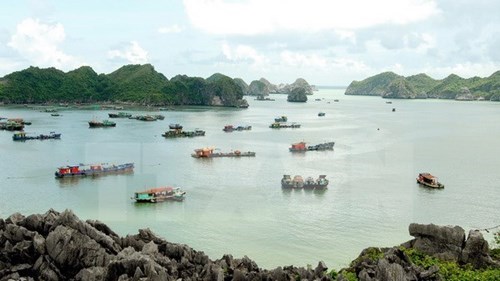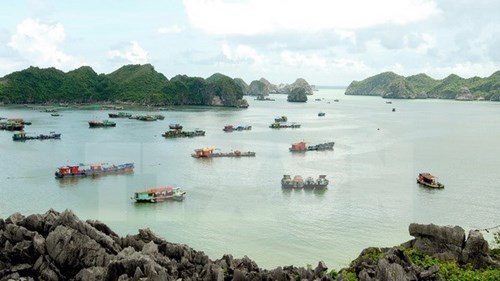
Vietnam’s tourism sector is likely to fulfill the target set by Prime Minister Nguyen Xuan Phuc of welcoming 13 million international visitors in 2017.
Vietnam served more than 8.47 million
foreign tourists in the first eight months of this year and grossed VND 335.8
trillion (USD 14.7 billion) in revenue, year-on-year increases of 29.7 percent
and 26.7 percent, respectively.

Cat Ba Island in Northern port city of Hai Phong. (Photo for
illustration)
Director of the Vietnam National
Administration of Tourism Nguyen Van Tuan said while the number of
international visitors to other countries in July and August declined such as
the Republic of Korea (down 40 percent), Thailand (down 9.5 percent), Malaysia
(down 7.5 percent), and the Philippines (down 38 percent), Vietnam attracted
over 1.2 million foreigners, a monthly increase of 18.5 percent.
Vietnam ranks 67th among 136 economies in
the Travel & Tourism Competitiveness Index 2017, up eight places compared
to the same period in 2015.
Tuan, however, admitted that there are
still challenges to ensuring sustainable tourism development, including low
infrastructure quality, inadequate Government spending on tourism, diminishing
natural resources and diseases.
He suggested tapping natural resources to
build sea-island, ecological, and cultural tourism products and services.
The world’s largest tourism website
TripAdvisor announced a list of ten most attractive spots in Vietnam voted by
tourists. Notably, the Central province of Quang Binh climbed to fourth in the
list, behind Hoi An, Hanoi and Ho Chi Minh City only.
According to TripAdvisor, Quang Binh was
described as a heaven for exploration and experiences with various tourism
destinations and routes such as Son Doong cave, Tu Lan cave system, Da Nhay
beach and Phong Nha- Ke Bang cave, among others.
Source: PANO
A diverse chain of eco-tourism and resort destinations concentrated in Hoa Binh city and the districts of Tan Lac, Da Bac, and Luong Son… Along with the launch of several key high-quality resort tourism projects, these developments have reshaped the landscape and enhanced the appeal of Hoa Binh as a travel destination.
Boasting diverse terrain, a mild climate, and rich natural resources, Cao Phong district is increasingly asserting its place on Vietnam’s tourism map, attracting both domestic and foreign visitors. The district is renowned for its stunning landscapes, majestic mountains, a crystal-clear hydropower lake, and the unique cultural identity of local ethnic groups.
With its pristine landscapes, unique cultural heritage of Muong ethnic minority, and an expanding range of visitor experiences, Tan Lac district of Hoa Binh has fast become a captivating destination for both domestic and international tourists.
Until now, Sung village in Cao Son commune, Da Bac district remains the only Dao ethnic community in Hoa Binh province to develop a community-based tourism model. Beyond its untouched natural landscapes, cultural identity serves as the cornerstone attraction for visitors.
Alongside the diverse cultural identities of the Kinh, Muong, Tay, Thai, Dao, and Mong ethnic people, Hoa Binh province is also renowned as the "capital" of the northwestern Vietnamese cuisine, offering unique and distinctive dishes. At festivals, during Lunar New Year (Tet), or on significant family or community occasions, special dishes are prepared, leaving a lasting impression on visitors.
A Phong Linh (Yellow Tabebuia) flower garden in Thang village, Thach Yen commune, Cao Phong district is currently in full bloom, drawing a large number of visitors.



